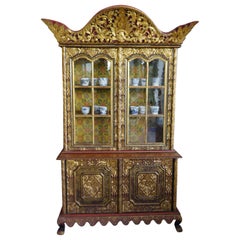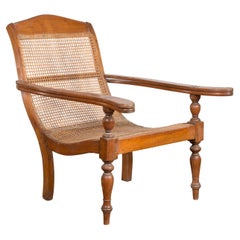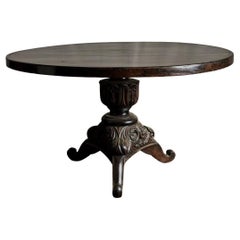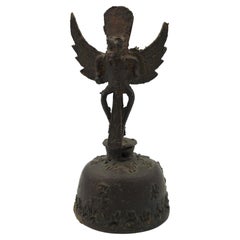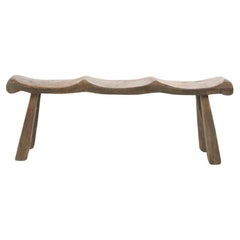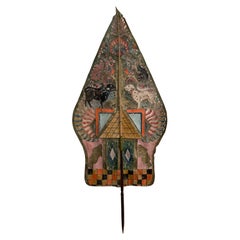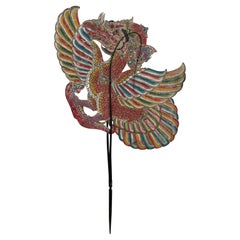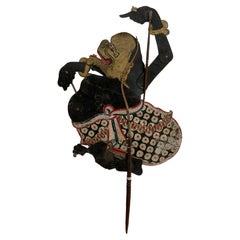Indonesian Antique Furniture
Late 19th Century Indonesian Indonesian Antique Furniture
Glass, Wood, Giltwood
Early 20th Century Indonesian Dutch Colonial Indonesian Antique Furniture
Cane, Wood
Early 20th Century Indonesian Indonesian Antique Furniture
Wood
Early 20th Century Indonesian Indonesian Antique Furniture
Brass
19th Century Indonesian Indonesian Antique Furniture
Teak
Early 20th Century Indonesian Tribal Indonesian Antique Furniture
Leather, Wood
Early 20th Century Indonesian Tribal Indonesian Antique Furniture
Leather, Wood
Early 20th Century Indonesian Tribal Indonesian Antique Furniture
Leather, Wood
Early 20th Century Indonesian Tribal Indonesian Antique Furniture
Leather, Wood
Early 20th Century Indonesian Tribal Indonesian Antique Furniture
Leather, Wood
Early 20th Century Indonesian Tribal Indonesian Antique Furniture
Leather, Wood
Early 20th Century Indonesian Tribal Indonesian Antique Furniture
Leather, Wood
Early 20th Century Indonesian Tribal Indonesian Antique Furniture
Fabric, Wood
Early 20th Century Indonesian Tribal Indonesian Antique Furniture
Wood, Fabric
19th Century Indonesian Neoclassical Indonesian Antique Furniture
Wood, Teak, Hardwood
Mid-19th Century Indonesian Antique Furniture
Paper
Early 20th Century Indonesian Rustic Indonesian Antique Furniture
Wood
Early 20th Century Indonesian Primitive Indonesian Antique Furniture
Teak
Early 20th Century Indonesian Indonesian Antique Furniture
Wood
Early 20th Century Indonesian Indonesian Antique Furniture
Wood
Late 19th Century Indonesian British Colonial Indonesian Antique Furniture
Wood
Mid-19th Century Indonesian Other Indonesian Antique Furniture
Abalone, Wood
Late 19th Century Indonesian Anglo-Japanese Indonesian Antique Furniture
Textile
Early 20th Century Indonesian Art Deco Indonesian Antique Furniture
Silver
19th Century Indonesian Indonesian Antique Furniture
Wood
Late 19th Century Indonesian Indonesian Antique Furniture
Leather, Wood
Early 20th Century Indonesian Rustic Indonesian Antique Furniture
Teak
Early 20th Century Indonesian Indonesian Antique Furniture
Silver
Early 20th Century Indonesian Indonesian Antique Furniture
Silver
1920s Indonesian Indonesian Antique Furniture
Wood
19th Century Indonesian Indonesian Antique Furniture
Teak
Early 20th Century Indonesian Tribal Indonesian Antique Furniture
Metallic Thread
Early 20th Century Indonesian Tribal Indonesian Antique Furniture
Cotton
1890s Indonesian Tribal Indonesian Antique Furniture
Rattan
Early 20th Century Indonesian Tribal Indonesian Antique Furniture
Metallic Thread
Early 20th Century Indonesian Victorian Indonesian Antique Furniture
Iron
Early 19th Century Indonesian Indonesian Antique Furniture
Teak
Late 19th Century Indonesian Tribal Indonesian Antique Furniture
Metallic Thread
Late 19th Century Indonesian British Colonial Indonesian Antique Furniture
Glass, Wood
Early 20th Century Indonesian Indonesian Antique Furniture
Silver
15th Century and Earlier Indonesian Indonesian Antique Furniture
Agate, Quartz, Other
1920s Indonesian Indonesian Antique Furniture
Stone
Early 20th Century Indonesian Organic Modern Indonesian Antique Furniture
Ceramic, Earthenware
1620s Indonesian Indonesian Antique Furniture
Teak
19th Century Indonesian Indonesian Antique Furniture
Wood
17th Century Indonesian Organic Modern Indonesian Antique Furniture
Limestone
Early 20th Century Indonesian Tribal Indonesian Antique Furniture
Silk
19th Century Indonesian Indonesian Antique Furniture
Wood
15th Century and Earlier Indonesian International Style Indonesian Antique Furniture
Petrified Wood
Early 20th Century Indonesian Indonesian Antique Furniture
Cotton
19th Century Indonesian Indonesian Antique Furniture
Stone
1760s Indonesian Georgian Indonesian Antique Furniture
Paper
Mid-18th Century Indonesian Indonesian Antique Furniture
Gold
Early 20th Century Indonesian Indonesian Antique Furniture
Silver
16th Century Indonesian Folk Art Indonesian Antique Furniture
Ceramic
Early 20th Century Indonesian Adirondack Indonesian Antique Furniture
Wool
Early 20th Century Indonesian Indonesian Antique Furniture
Copper, Iron
19th Century Indonesian Indonesian Antique Furniture
Gold
Early 20th Century Indonesian Tribal Indonesian Antique Furniture
Wood, Teak
Early 20th Century Indonesian Indonesian Antique Furniture
Hardwood
- 1
- ...
Indonesian Antique Furniture For Sale on 1stDibs
How Much is a Indonesian Antique Furniture?
- 1stDibs ExpertApril 5, 2022Teakwood is a type of wood popularly used in Indonesian furniture. It is a tropical hardwood mainly used in Java, Indonesia, that can grow up to 130 feet tall. Shop a collection of Indonesian furniture from some of the world’s top sellers on 1stDibs.
- 1stDibs ExpertApril 5, 2022Balinese furniture can be made from a variety of different materials. These materials can include bamboo, rattan and the tropical hardwood teak. You can shop a collection of Balinese furniture pieces from some of the world’s top sellers on 1stDibs.
- 1stDibs ExpertApril 5, 2024To know if your furniture is antique, look for labels and markings that indicate the maker. From there, you can use trusted online resources to determine when they were active and examine images to try to estimate the age of your piece. Furniture produced 100 years ago or more is antique. You can also have your furniture assessed by an appraiser or antiques dealer to learn about its age. On 1stDibs, explore a large collection of antique furniture.
- What makes furniture an antique?1 Answer1stDibs ExpertAugust 15, 2019
A piece of furniture is considered an antique if it is at least 100 years old.
- Is antique furniture in style?1 Answer1stDibs ExpertApril 22, 2024Yes, antique furniture is in style. Many people appreciate the beauty and handcrafted character of antique furniture and love the idea of owning pieces with a rich history. Remember that style preferences are nothing if not fluid, meaning what's in one year may not be the next. So, in choosing the furniture you're planning to live with, you should pay less attention to interior design fads than to what speaks to you. That way, you can select pieces that will add long-term character to your home. On 1stDibs, find a large collection of antique furniture.
- 1stDibs ExpertOctober 5, 2021The best finish for antique furniture is a matter of liking. But film finish is recommended by experts as it leaves a thick coat of film on the wood surface which protects wood from water and scratches. Shellac or varnish and water base are commonly used film finishes. Find an exquisite collection of antique, new and vintage furniture on 1stDibs
 PAGODA REDOctober 7, 2020
PAGODA REDOctober 7, 2020To determine the age of a Chinese furniture piece, look carefully at the joinery and finish. Natural expansion and contraction of the wood over time will cause a joint to protrude or retract, distorting a once-seamless fit. Antique lacquer finishes become crackled and worn over time. Areas of exposed wood, such as the underside of a table, the footrest of a chair, or the back of a cabinet should appear raw and dry compared to the finished surface. With use, the legs of tables and chairs become weathered near the bottom from precipitation and use.
- 1stDibs ExpertFebruary 22, 2021Antique furniture can be worth quite a lot, particularly if it is in good quality. The rarer the piece, the higher the value.
- 1stDibs ExpertFebruary 22, 2021There are a number of factors that can indicate if your antique furniture is valuable. When determining the value of antique furniture, consider its rarity. Additionally, it is important to determine the quality and condition of vintage furniture. If unsure of the value of your vintage furniture, have it appraised.
- 1stDibs ExpertFebruary 1, 2024To date antique furniture from the UK, first look for identifying markings on the piece. You can then use trusted online resources to determine when the maker was active. From there, you may be able to estimate the year of production by looking at images of other furniture the maker produced. An expert appraiser or antiques dealer can also aid you in the dating process. Find a large selection of antique furniture on 1stDibs.
- 1stDibs ExpertFebruary 13, 2024Whether antique furniture is making a comeback is a matter of opinion. Many people would argue that antique furniture never faded from fashion, as there have always been individuals who love the idea of owning pieces that have history. Some of the most popular styles for antique furniture include Art Deco, Arts and Crafts, Renaissance Revival, Elizabethan, Gothic Revival, Victorian and Chippendale. Find a large collection of antique furniture from some of the world's top dealers on 1stDibs.
- 1stDibs ExpertJanuary 25, 2019
The difference between vintage and antique furniture is that vintage furniture is at least 20 years old, while antiques must be at least 100 years old to be considered antique.
